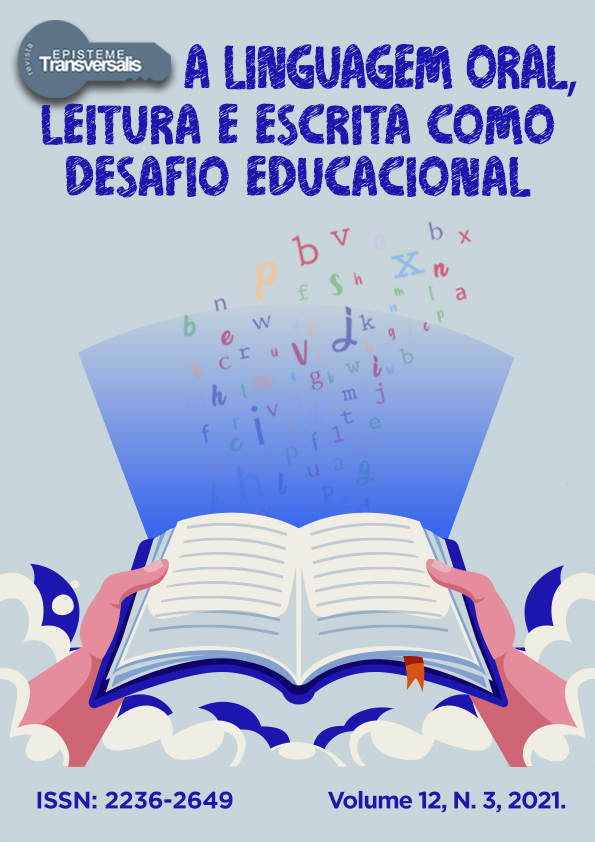UMA ANÁLISE DA TRANSFERÊNCIA DE PROPRIEDADES ASPECTUAIS DO PERFECT NA APRENDIZAGEM DE INGLÊS COMO SEGUNDA LÍNGUA
AN ANALYSIS OF THE TRANSFER OF PERFECT'S ASPECTUAL PROPERTIES IN LEARNING ENGLISH AS A SECOND LANGUAGE
Keywords:
Segunda Língua, Transferência Morfossintática, Aspecto perfect, Second Language, Morphosyntactic Transfer, Perfect AspectAbstract
Este trabalho objetiva contribuir para o entendimento da aquisição de propriedades aspectuais na L2. Pretende-se, mais especificamente, investigar a aquisição do aspecto perfect, universal e existencial, por falantes de português brasileiro aprendizes de inglês como L2. Estabeleceram-se as hipóteses: (1) as formas verbais Present Continuous e Simple Present são, juntas, mais utilizadas do que o Present Perfect Simple e do que Present Perfect Continuous, para a expressão de perfect universal associado ao presente e (2) o Simple Past é a única forma verbal, das que expressam perfect existencial, utilizada para a expressão desse tipo de perfect associado ao presente. A fim de alcançar os objetivos, elaborou-se um teste de preenchimento de lacuna com opções de resposta, que foi aplicado a 86 brasileiros aprendizes de inglês como L2. A análise dos resultados sugere uma transferência morfossintática da forma Present Continuous na expressão do perfect universal e do Simple Past na expressão do perfect existencial durante o processo de aprendizagem. Por fim, considerou-se que a L2 parece constituir de fato um conhecimento gramatical, apesar das suas diferenças em relação à L1. No que diz respeito ao perfect, foi possível perceber que, assim como dados de aquisição de L1 revelaram em Rodrigues (2019), no processo de aprendizagem de L2, as realizações de perfect existencial parecem se consolidar anteriormente às realizações de universal, o que está de acordo com a proposta de dissociação dos tipos de perfect na representação mental desse aspecto, conforme defendido por Nespoli (2018) e Nespoli; Martins (2018).
Abstract
This paper aims to contribute to the understanding of the acquisition of aspectual properties in L2. It is intended, more specifically, to investigate the acquisition of the perfect, universal and existential aspect, by Brazilian Portuguese speakers who learn English as L2. The hypotheses were established: (1) the verbal forms Present Continuous and Simple Present are, together, more used than the Present Perfect Simple and than the Present Perfect Continuous, for the expression of universal perfect associated with the present and (2) Simple Past is the only verbal form, of the ones that express existential perfect, used to express this perfect associated with the present. A gap-filling test with answer options was developed to achieve the objectives, which was applied to 86 Brazilian learners of English as L2. The analysis of the results suggests a morphosyntactic transfer of the Present Continuous form in the expression of the universal perfect and of the Simple Past in the expression of the existential perfect during the learning process. Finally, it was considered that L2 actually constitutes grammatical knowledge, despite its differences concerning L1. About the perfect, it was possible to see that, just as L1 acquisition data revealed in Rodrigues (2019), in the L2 learning process, the realizations of the existential perfect seem to be consolidated before the universal perfect ones, which is in accordance with the proposal of division of the perfect aspect into two types in the mental representation of this aspect, as defended by Nespoli (2018) and Nespoli; Martins (2018).
Downloads
Downloads
Published
How to Cite
Issue
Section
License
Copyright (c) 2021 Episteme Transversalis

This work is licensed under a Creative Commons Attribution-NonCommercial 4.0 International License.
Revista Episteme Transversalis © 2010 por Centro Universitário Geraldo Di Biase está licenciada sob Creative Commons Atribuição 4.0 Internacional. Para visualizar uma cópia desta licença, visite https://creativecommons.org/licenses/by/4.0/













